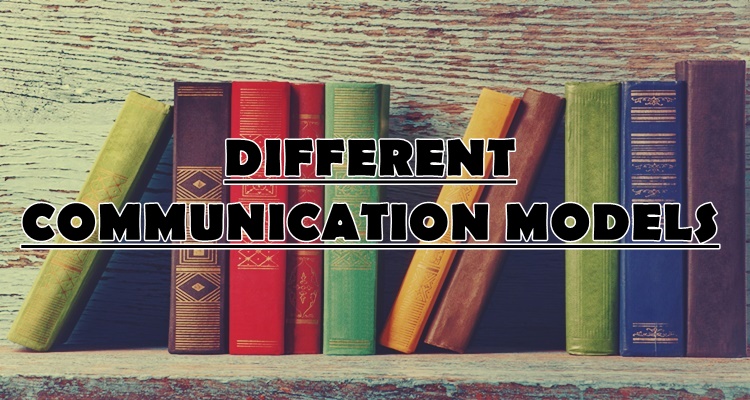What are the different communication models? Here’s a summary.
DIFFERENT COMMUNICATION MODELS – Here’s a quick summary of the major communication models that explains human communication.
Communication is a way of creating, interpreting, and negotiating meaning as per Dr. Amy M. Corey. It can accordingly be in the form of verbal, nonverbal, textual, aural, visual, or even physical. It is a learned behavior despite the fact that humans are naturally born with the capacity to speak, to hear, and to see. People learn to communicate through codes, symbols, and systems of language.

Models of communication are divided into three categories:
- Linear Models – a linear or one-way communication between the sender to receiver.
- Interactional Models – a two-way communication where the receiver gives feedback to the sender of the message where the feedbacl could be verbal or non-verbal.
- Transactional Models – the most dynamic of communication models where the message becomes more complex as the conversation progresses.
Check out the various models below:
- Aristotle’s Model (Linear)
– There are five factors to be taken into consideration: speaker, speech, occasion, target audience, and effect. Accordingly, the speaker has to be careful of his words in his speech and understand his target audience in order to make an impact. Example to that is a politician making a speech in front of his constituents. The politician must know the need of the public, make a speech about it, and provide solutions to issues and problems. Through this, he’ll be able to receive votes from them as an effect. - Lasswell’s Model (Linear)
– The five questions to consider are who, said what, through which channel, to whom, and with what effects. - Shannon-Weaver Model (Linear)
– The widely accepted model of communication where there is an Information Source who passes the message from the brain to the mouth eventually reaching the receiver. However, there will be several noises and other disturbances until the message gets to its final destination. And this is a loophole in this model. The message, before reaching the final destination, might be defined or understood differently. - Berlo’s S-M-C-R Model (Linear)
– The SMCR stands for Source, Message, Channel, and Receiver. The source or the sender is the one who sends out message. The message has the content, element, treatment, structure, and code. Encoding is a crucial part of this model, or else, it will be distorted. It will be then send out through a channel where the five senses are involved. The receiver will then decode the message and make a response accordingly. - Osgood-Schramm Model (Interactive)
– This is a model where there’s a reciprocal relationship between the sender and receiver. The encoding and decoding process are crucial parts of this communication. The interpretation depends on these two processes and if the receiver fails to understand the message from the sender, the message is of no use. This type of communication model is only effective and complete if there’s a feedback from the receiver. - Westley and Maclean Model (Interactive)
– Bruce Westley and Malcolm S. MacLean Jr. proposed this in year 1957 where this model’s source of message is from external factors and the individual then conveys the message to other people. - Barnlund’s Transactional Model (Transactional)
– In this model, both the sender and the receiver are responsible of the effect and effectiveness of the communication. There should be a shared meaning in messages. There’s a simultaneous sending and receiving of messages between people. - Dance’s Helical Model (Transactional)
– This is proposed by Frank Dance in 1967 and just like Helix, the communication or the ability to communicate of a person progresses birth and continues till the existing moment. In a person, communications starts as early as after giving birth. The baby cries as an indication of being alive. As life goes on, he cries to signal that he is hungry or hurt. Children have their own way to communicate until they start going to school. The crying is transformed to words or his speech as he interacts with people around him. There’s a progression in communication.
READ ALSO:
- Mga Karagatan Ng Daigdig – Ano Ang 5 Karagatan Ng Daigdig?
- Conditionals In Argumentation – Examples and Structure Of Conditionals
For more news and updates, follow us on Twitter:@philnews_ph Facebook:@PhilNews and; YouTube channel Philnews Ph.
